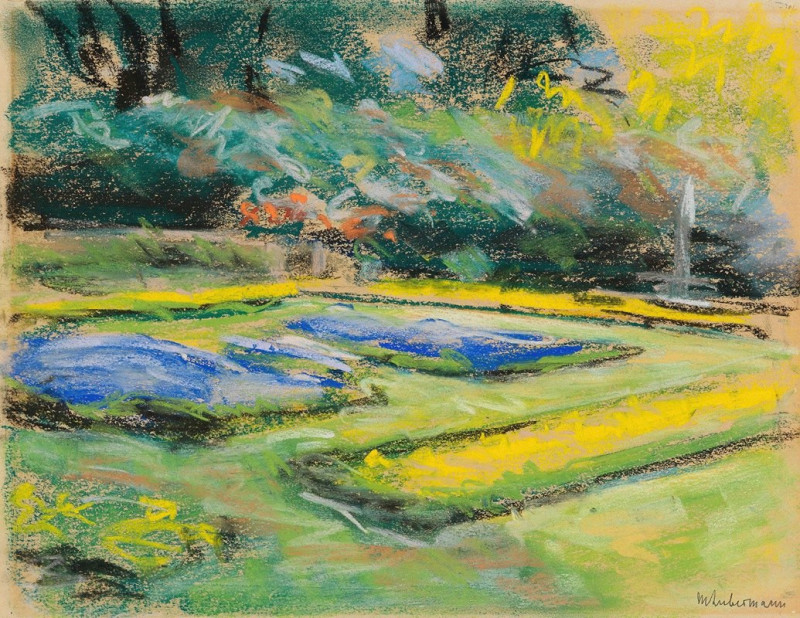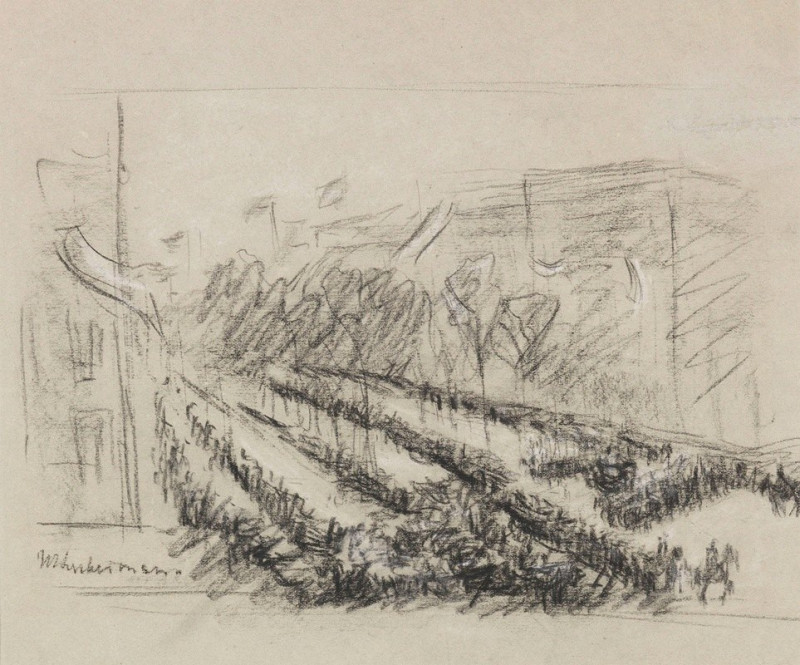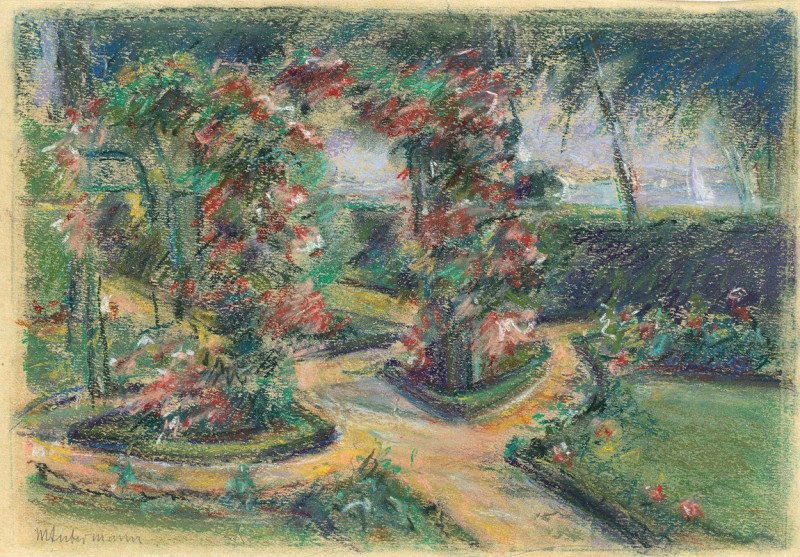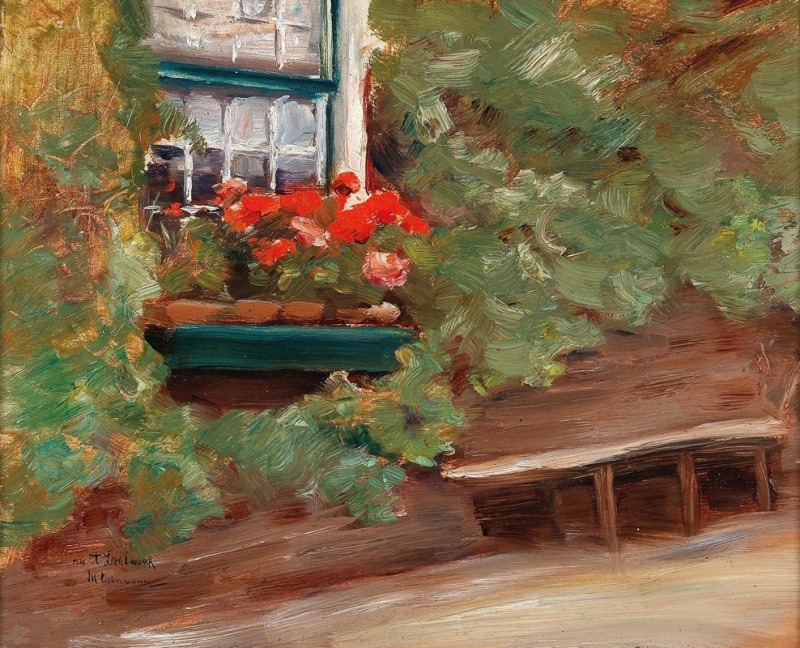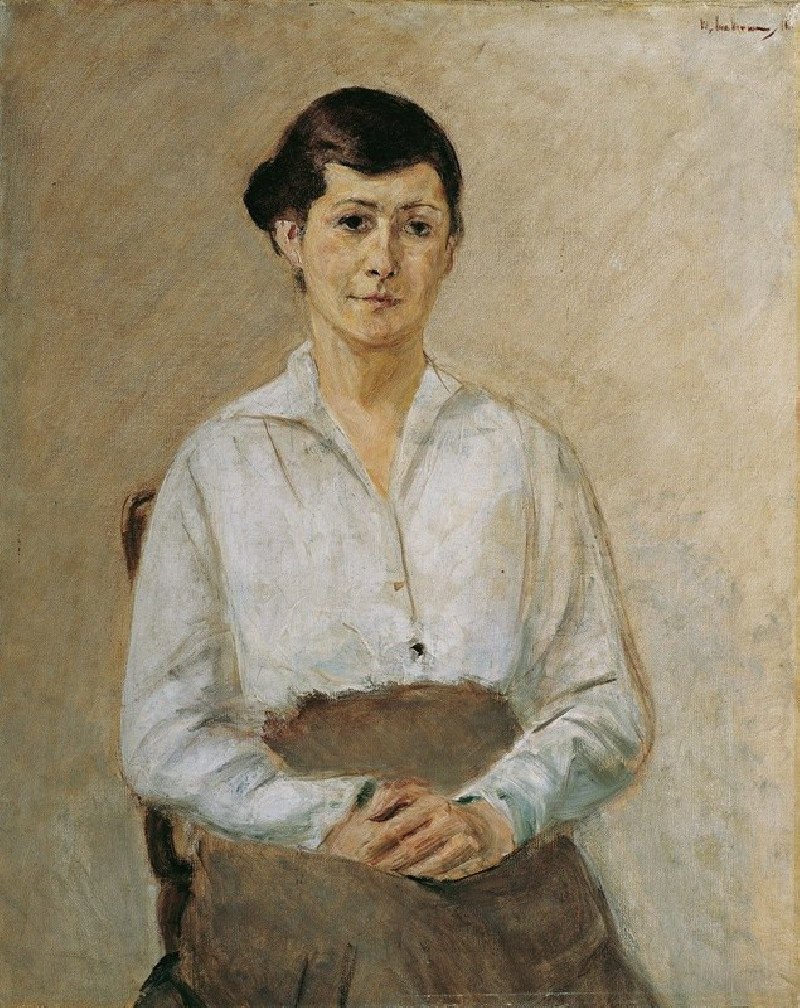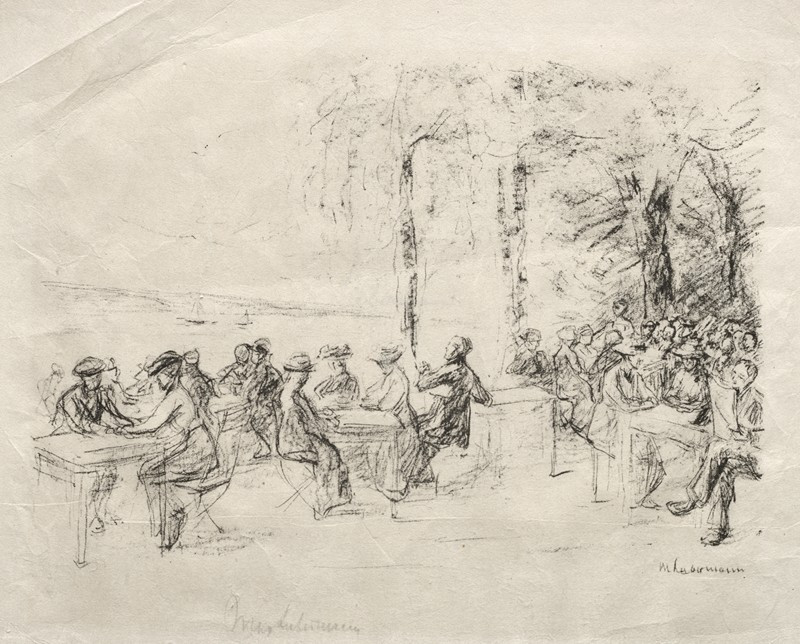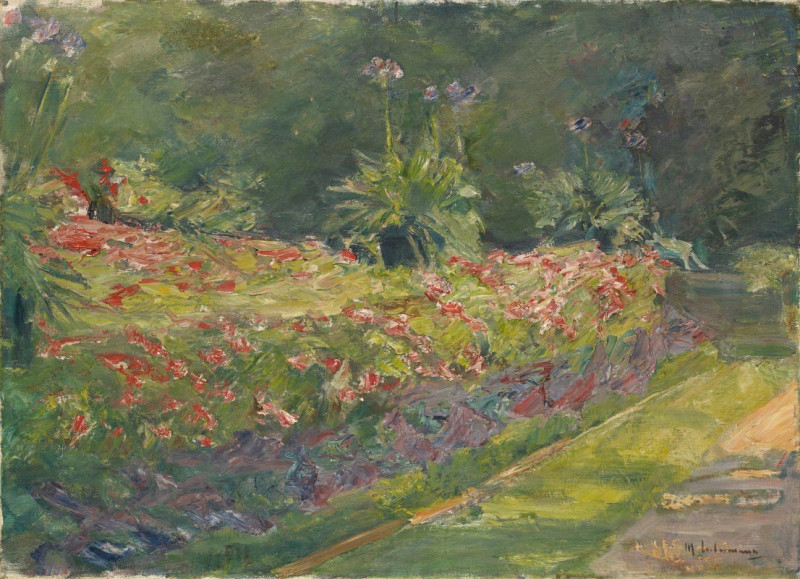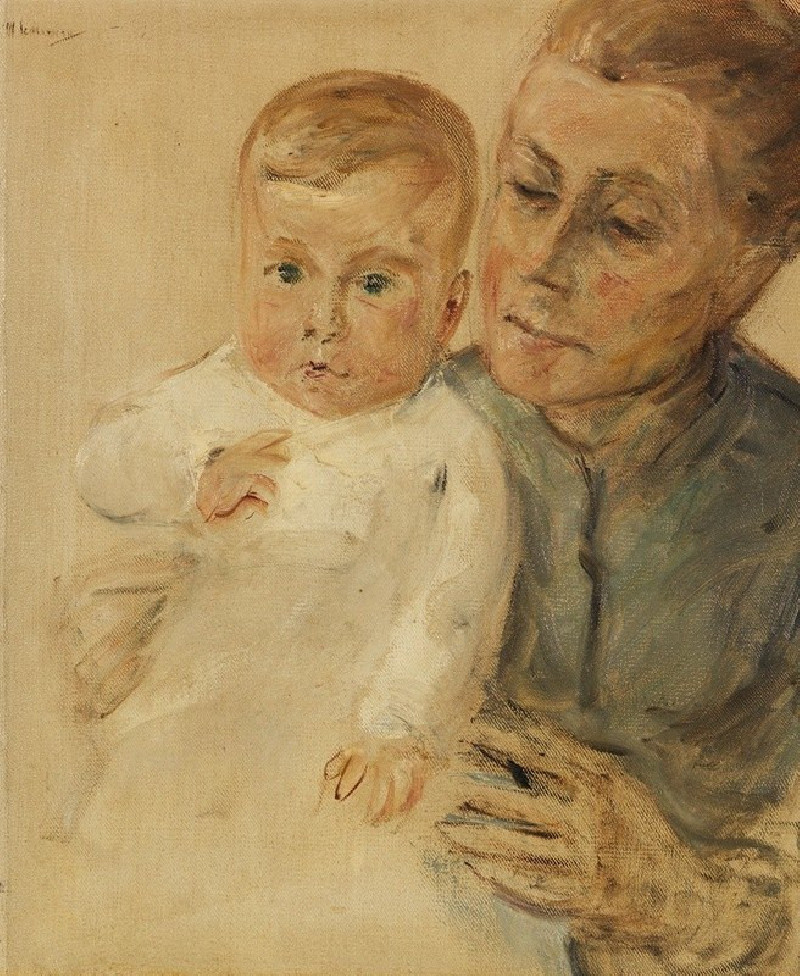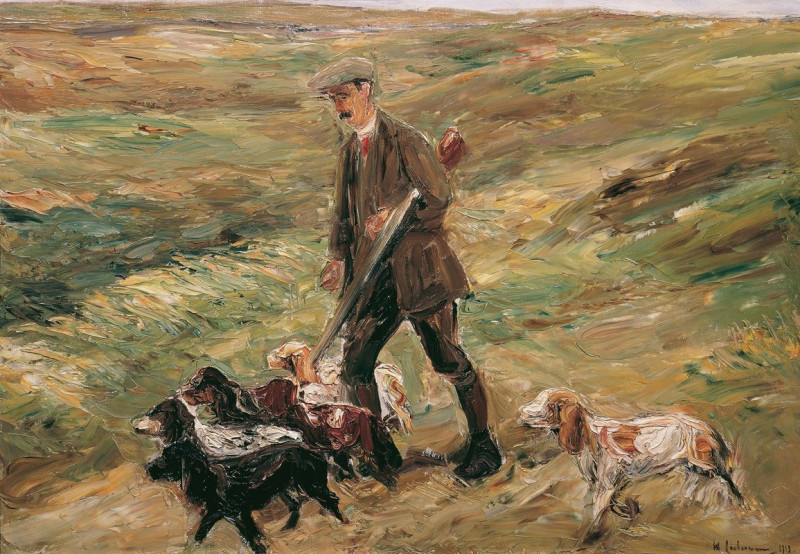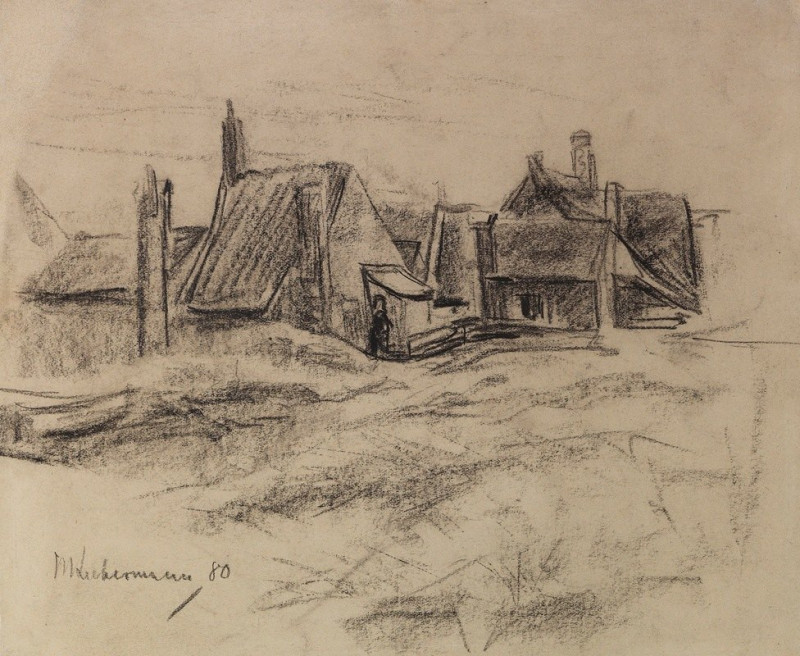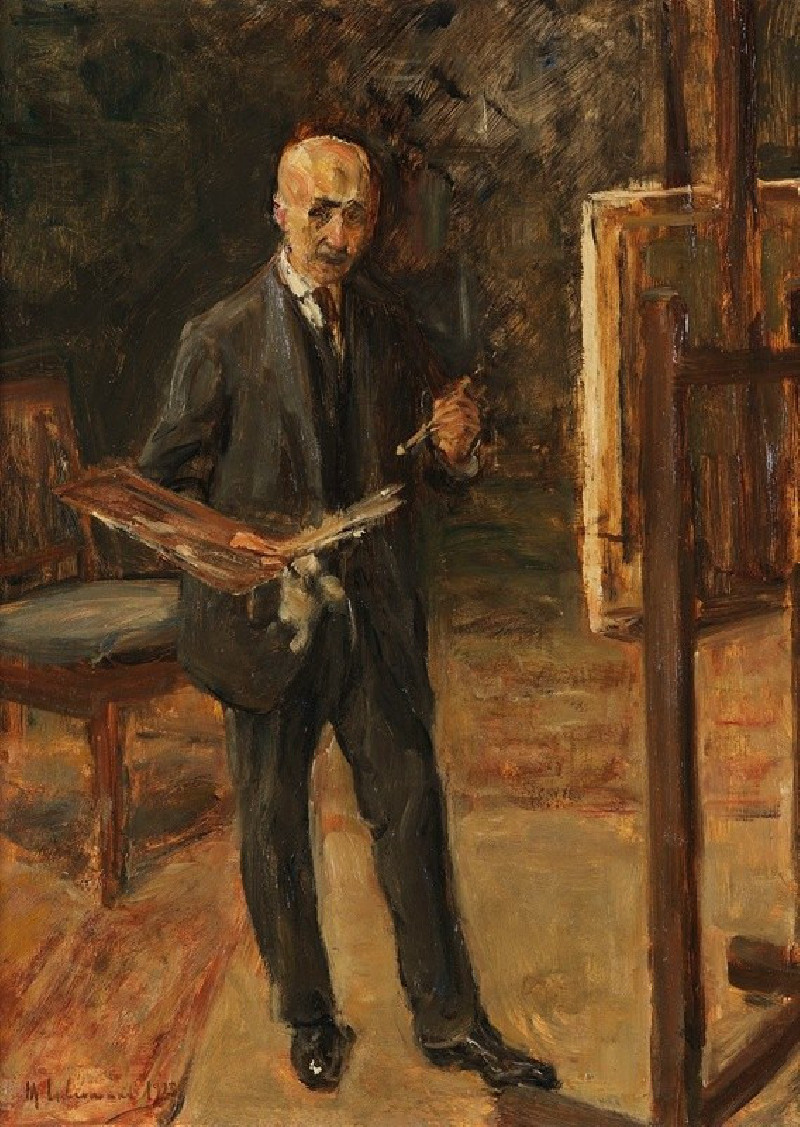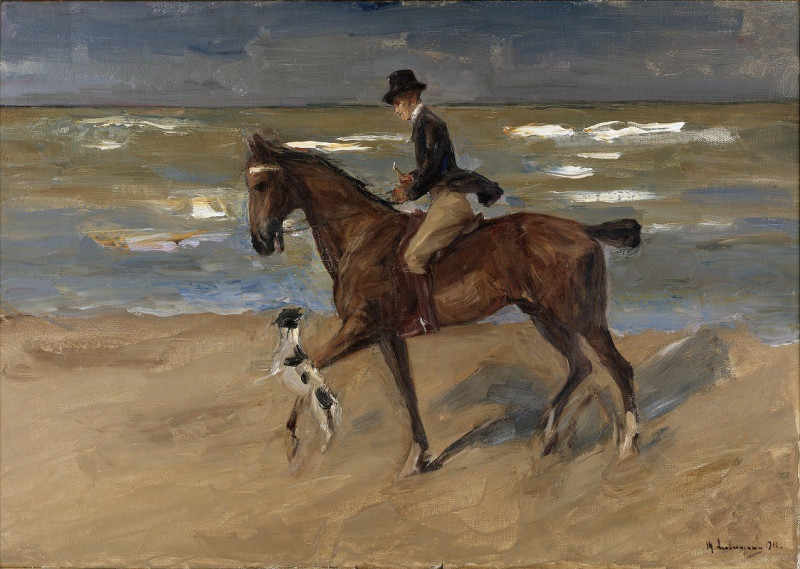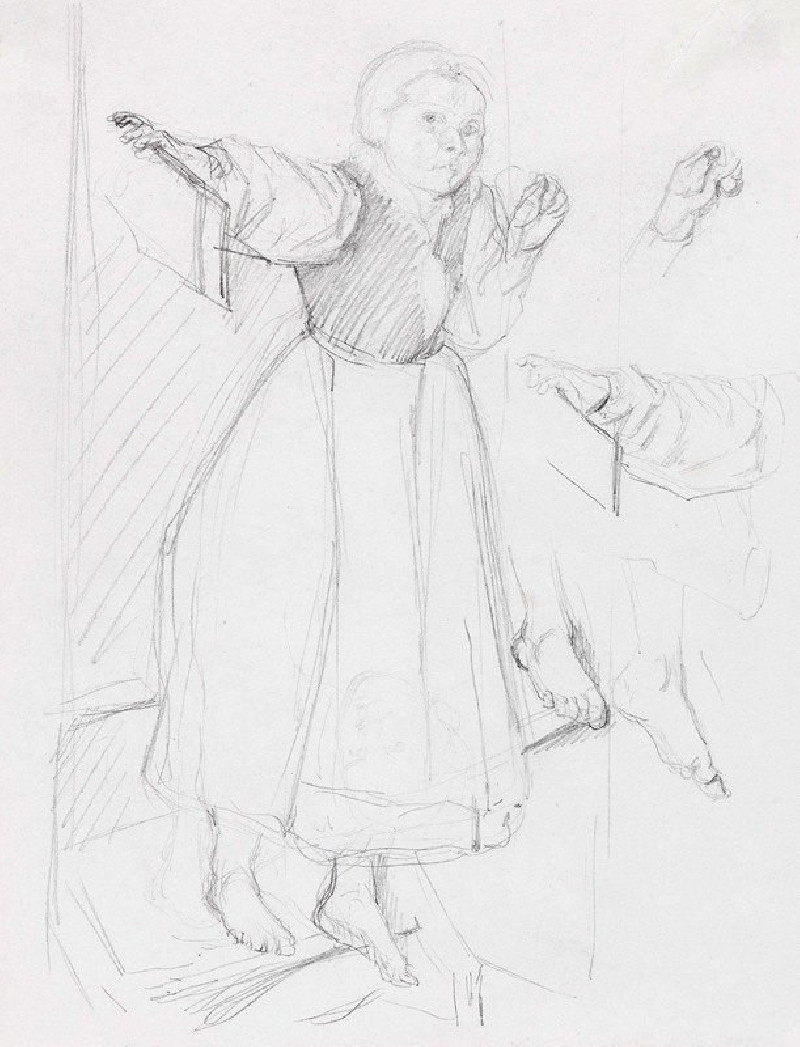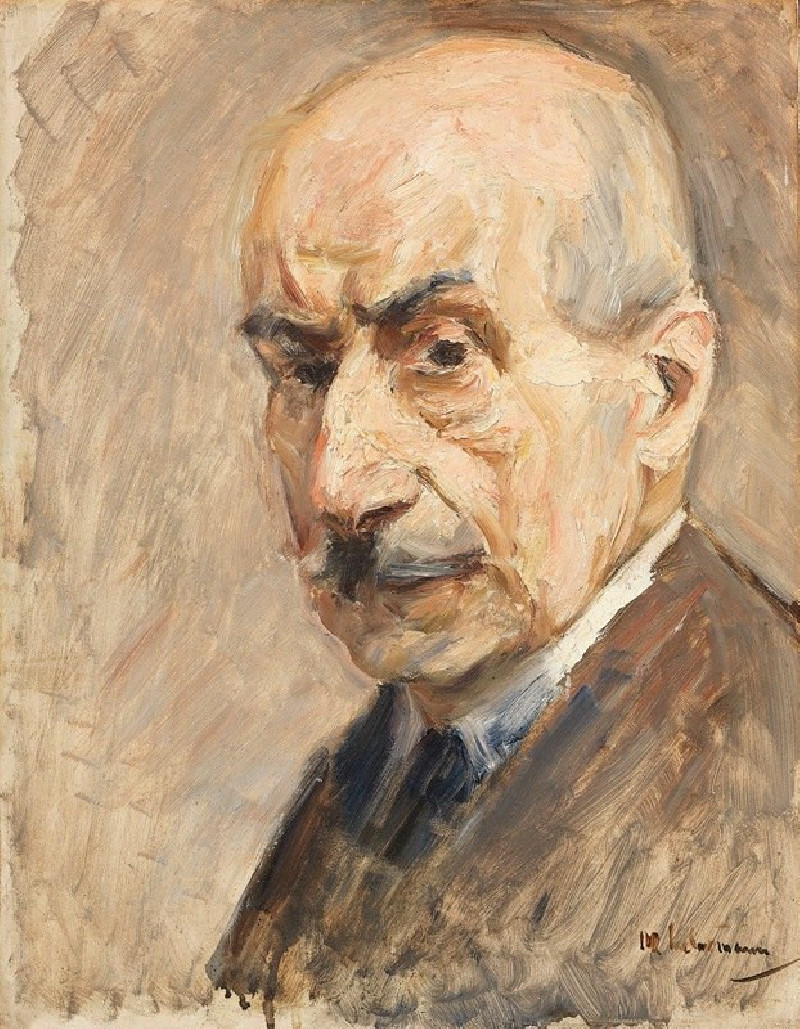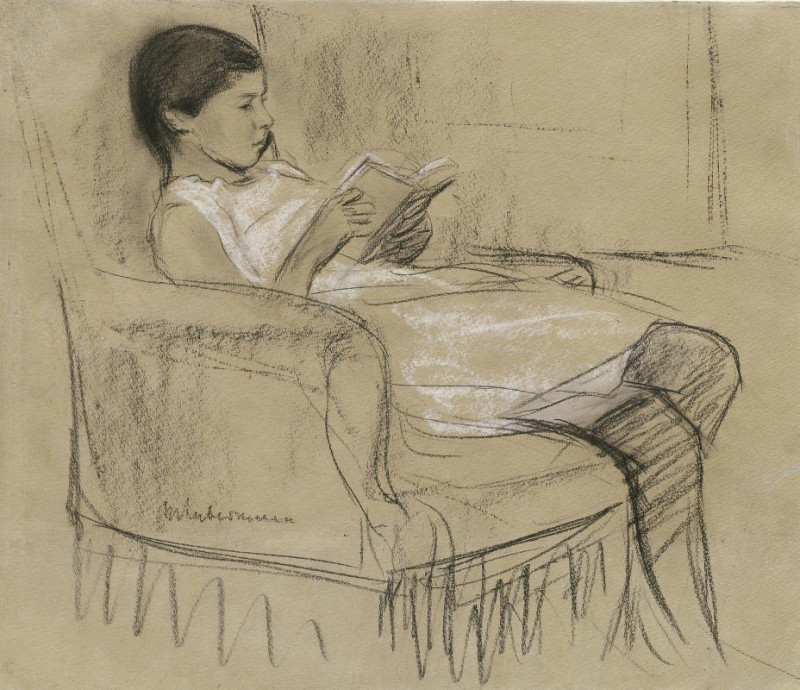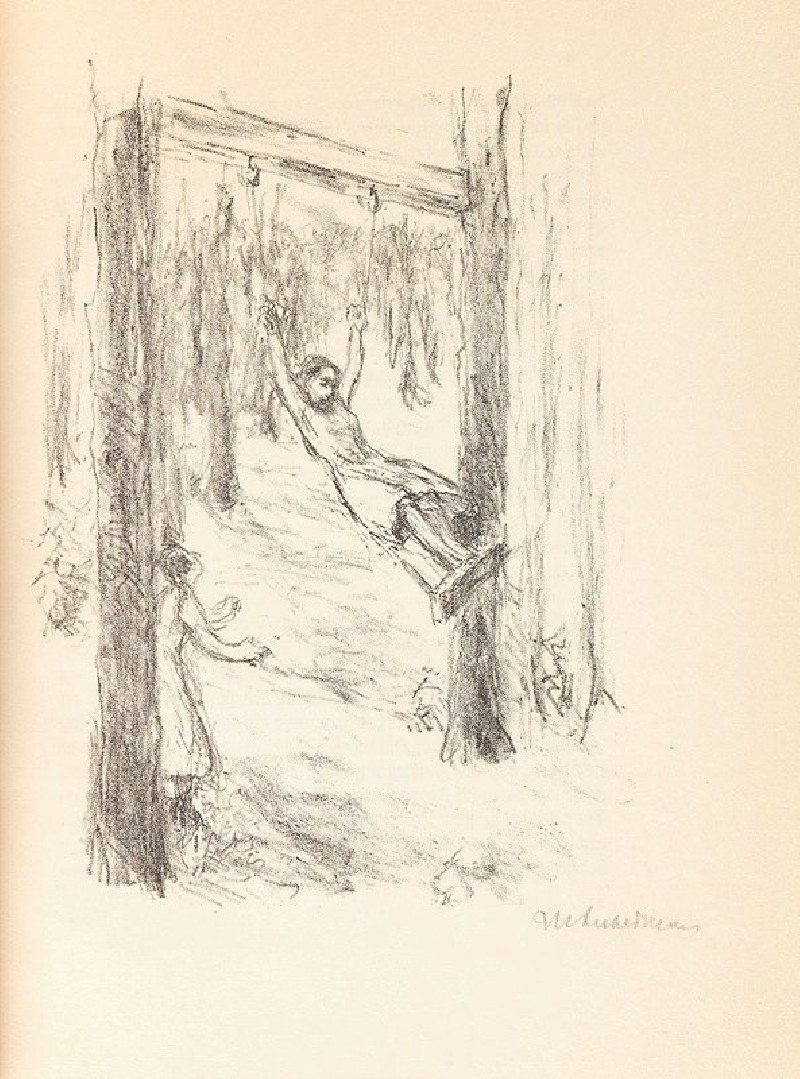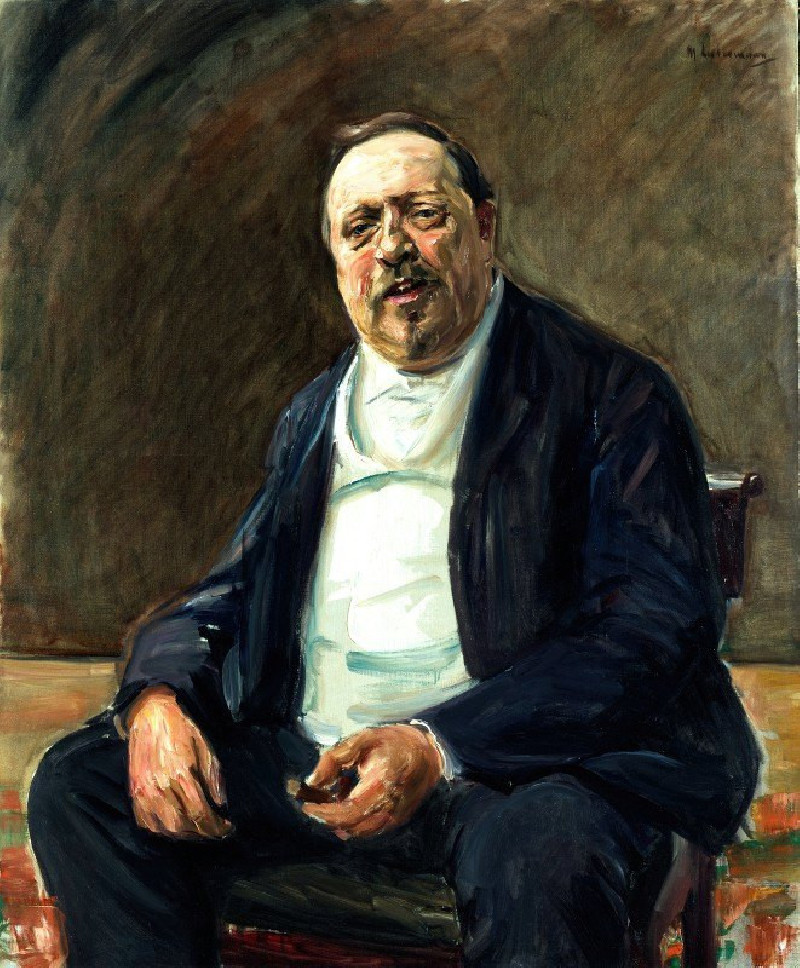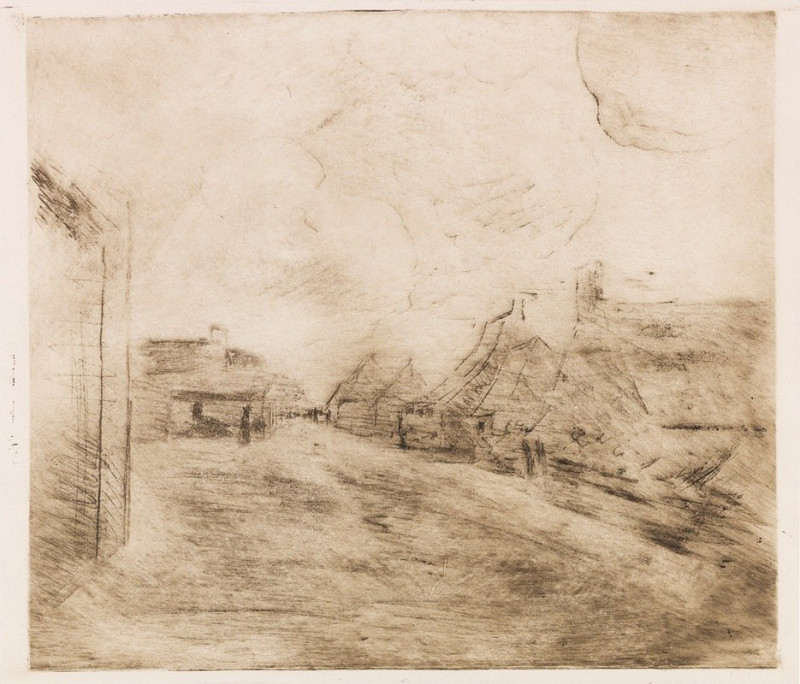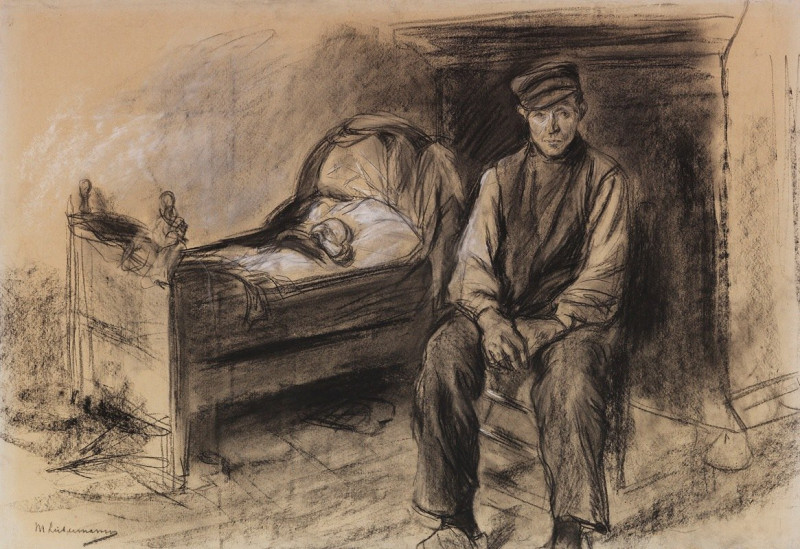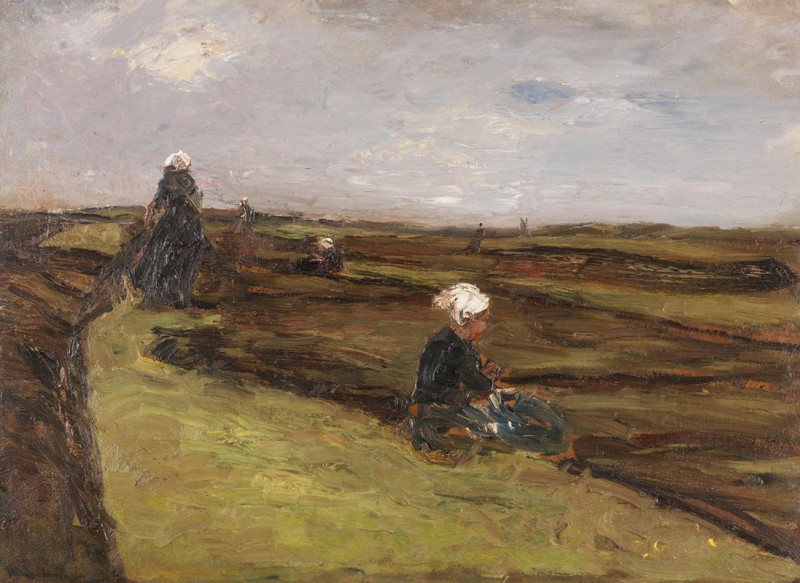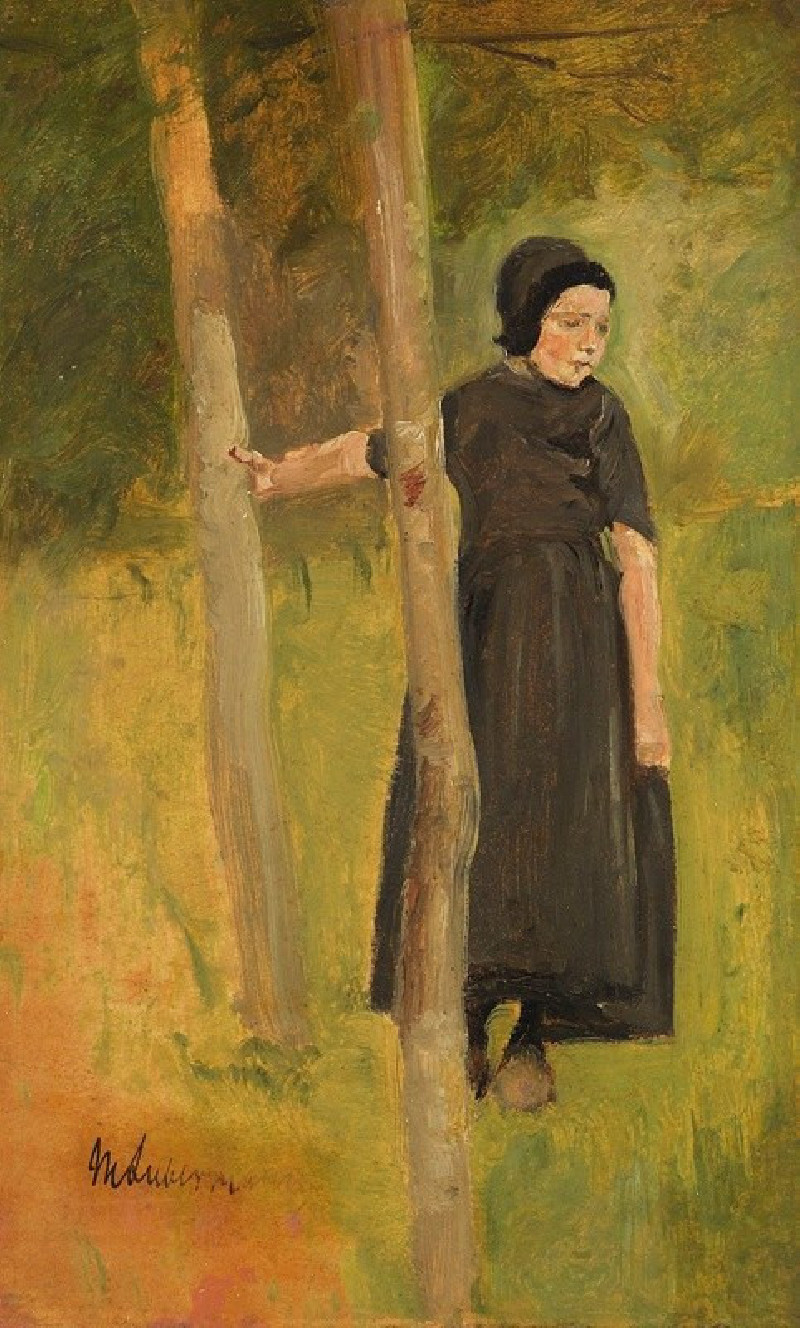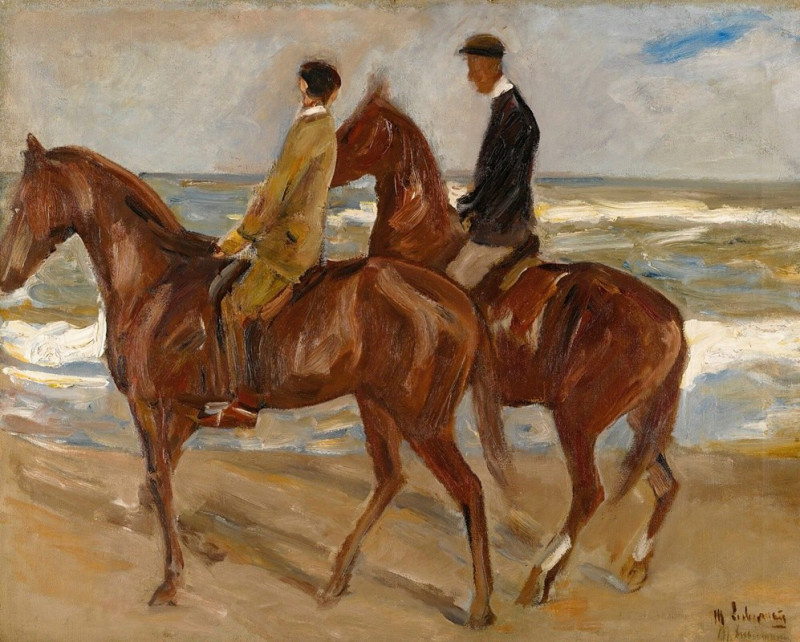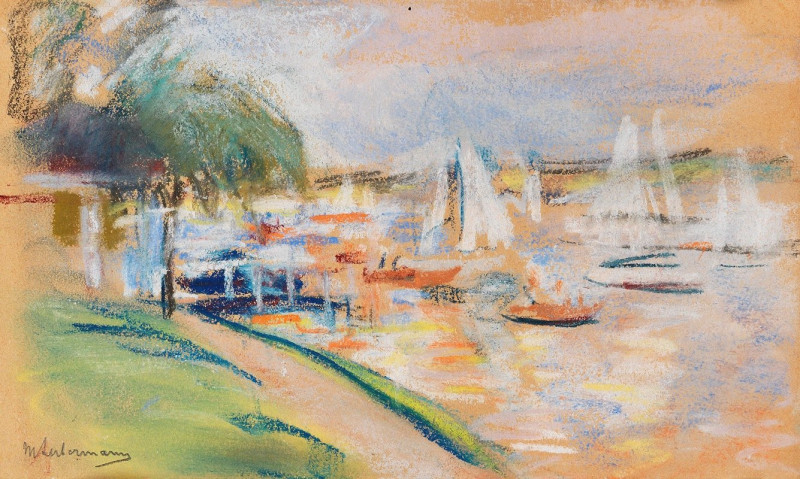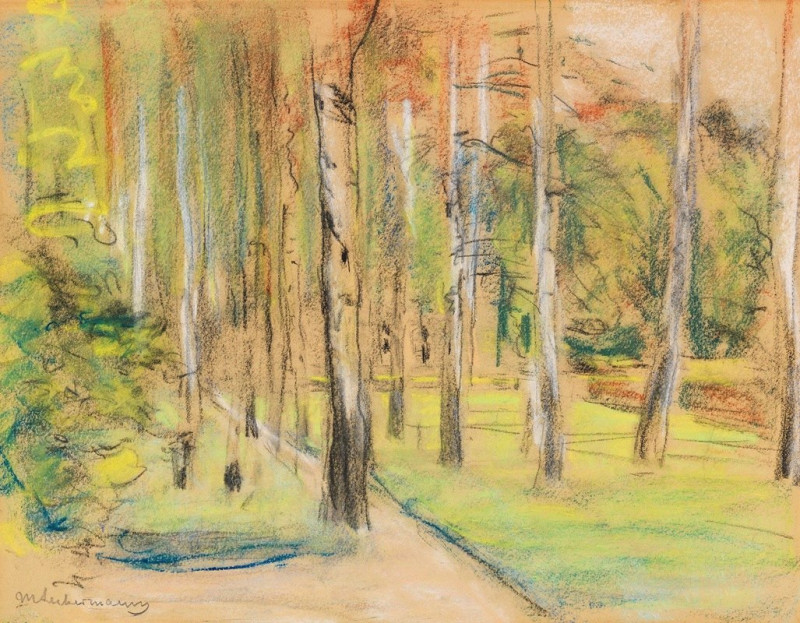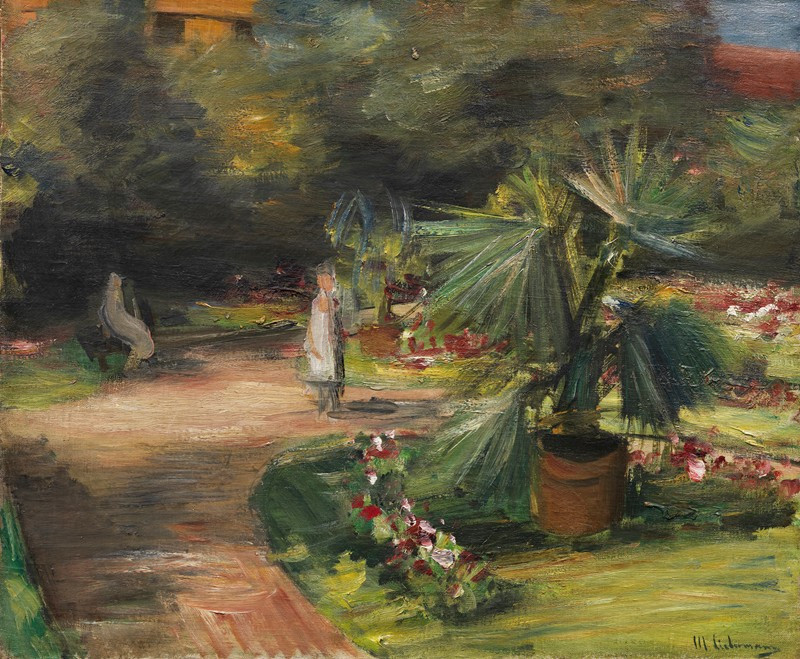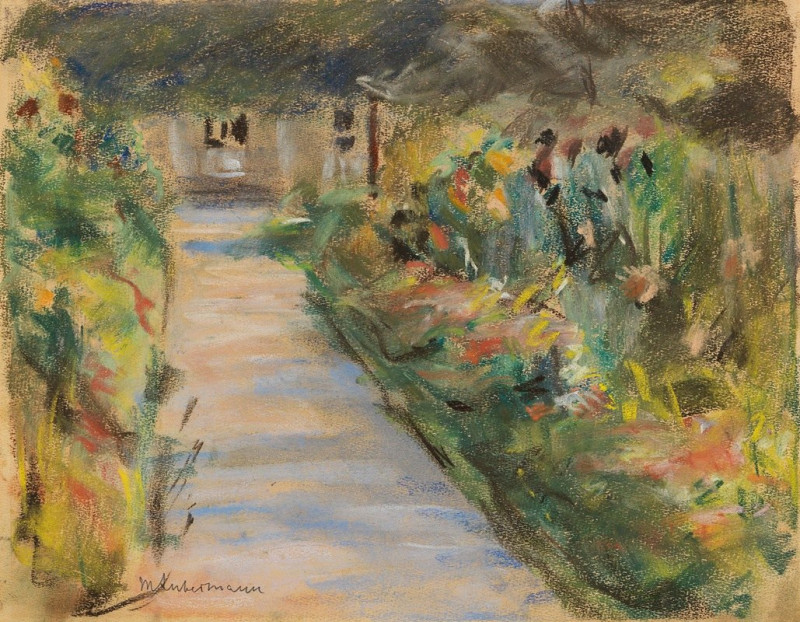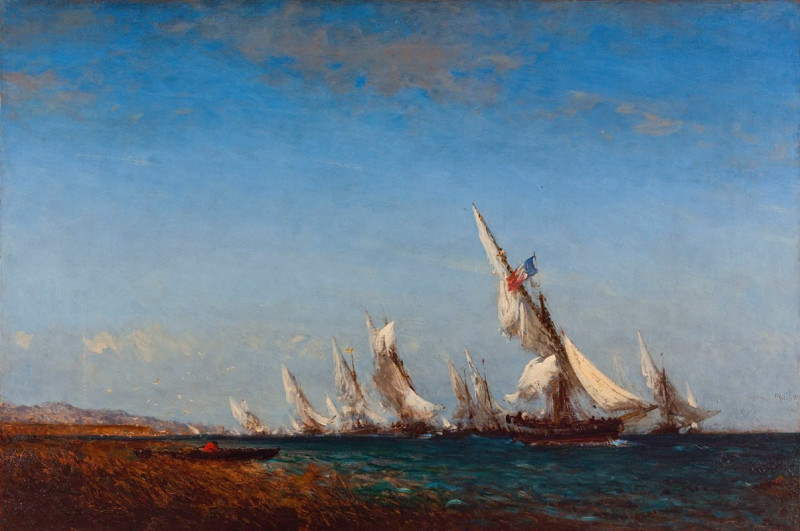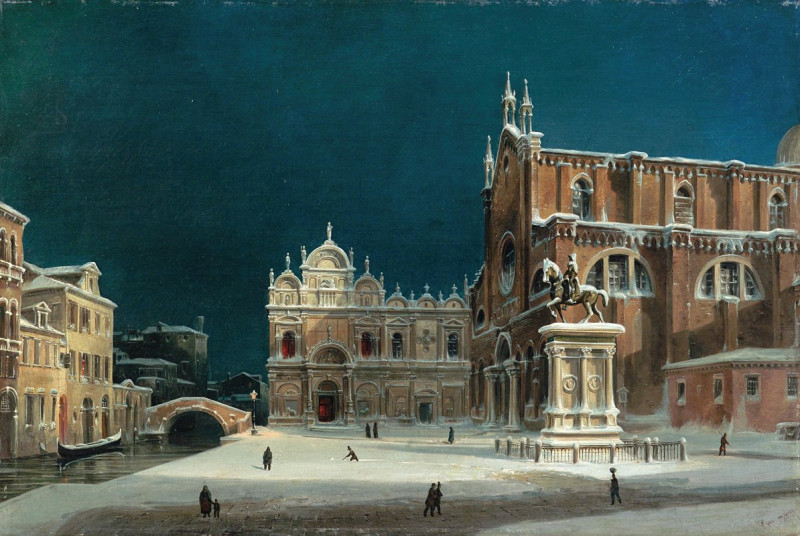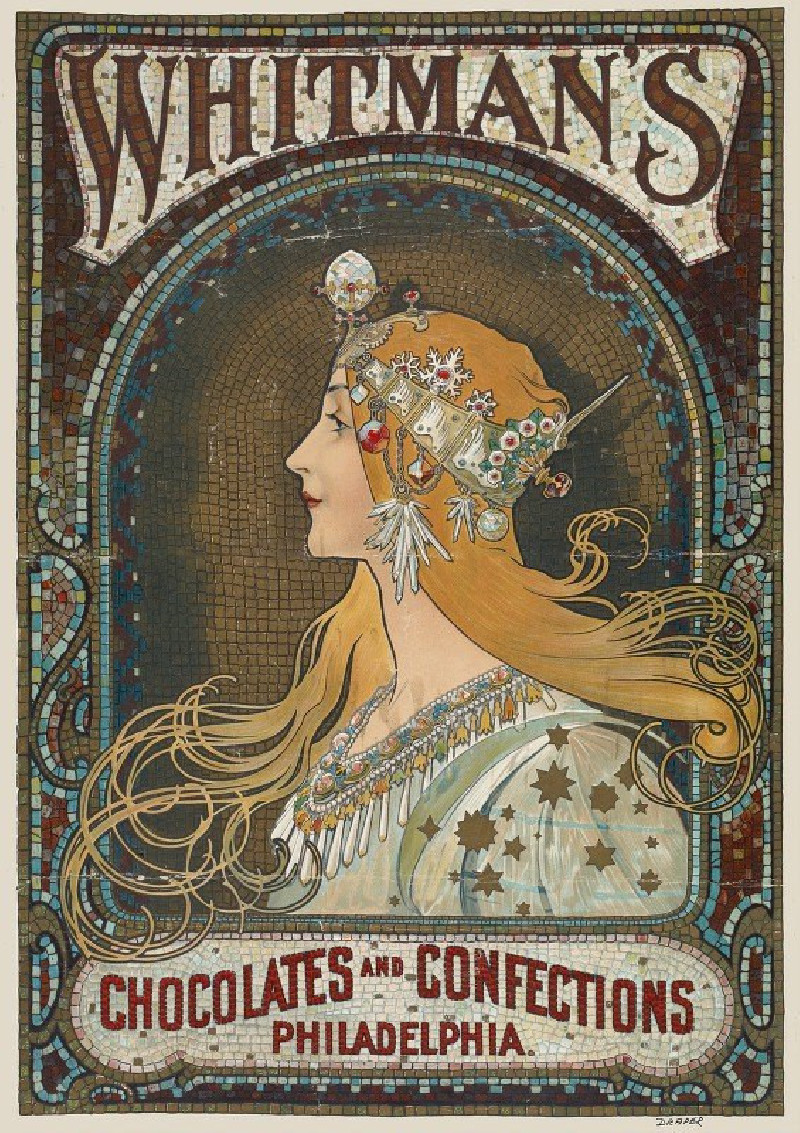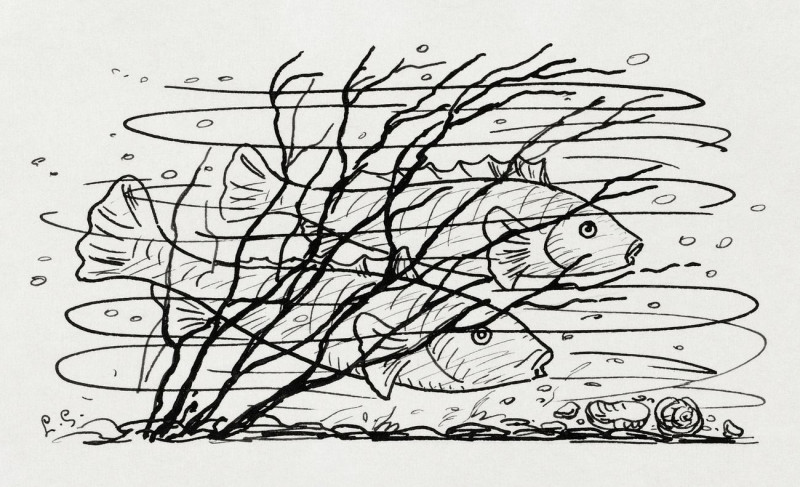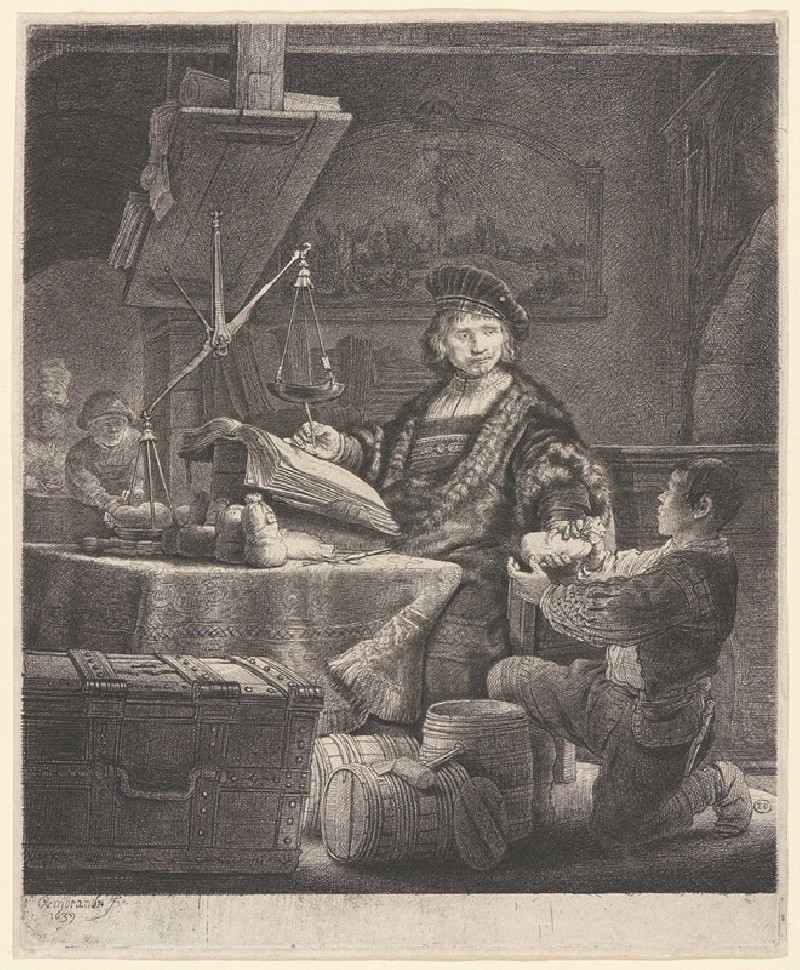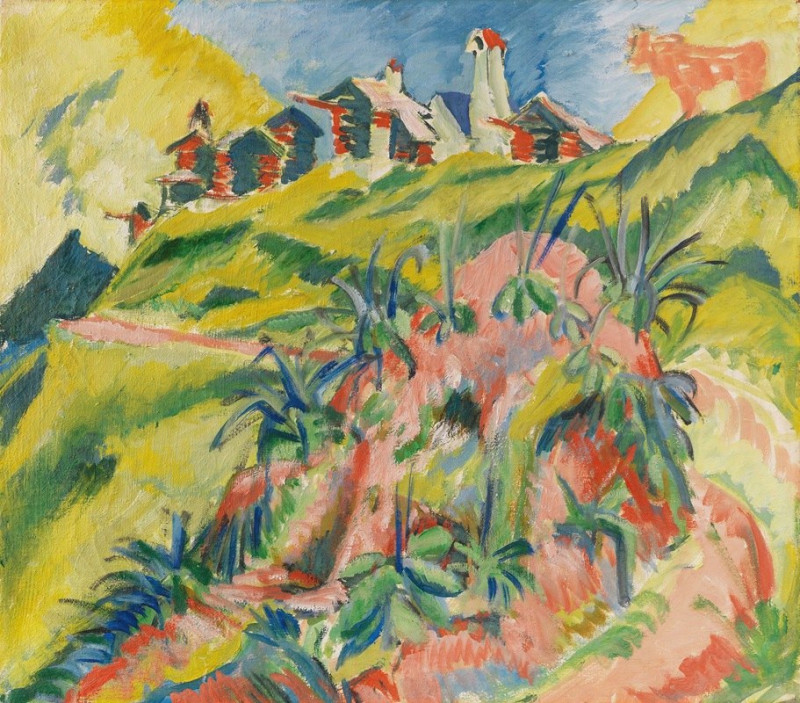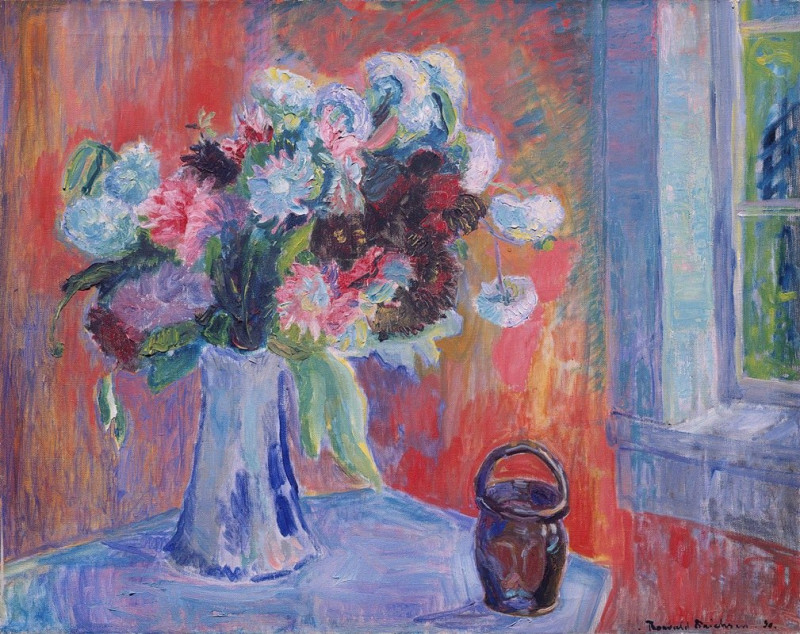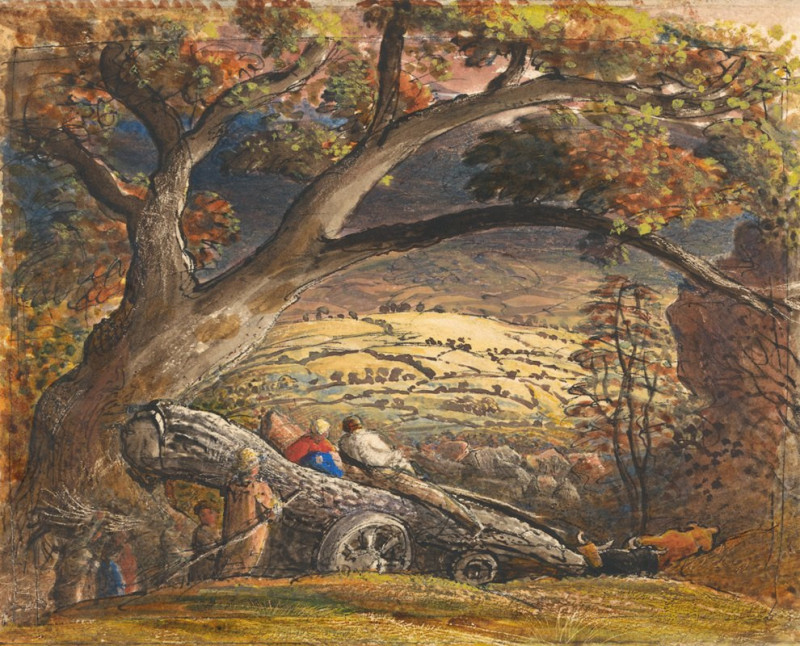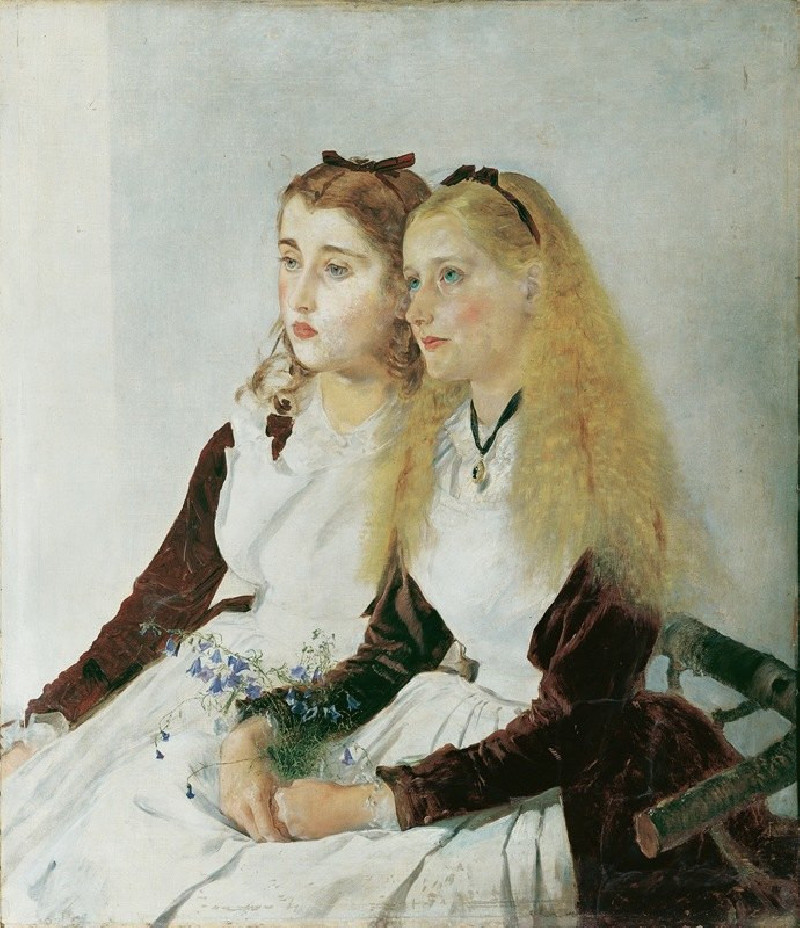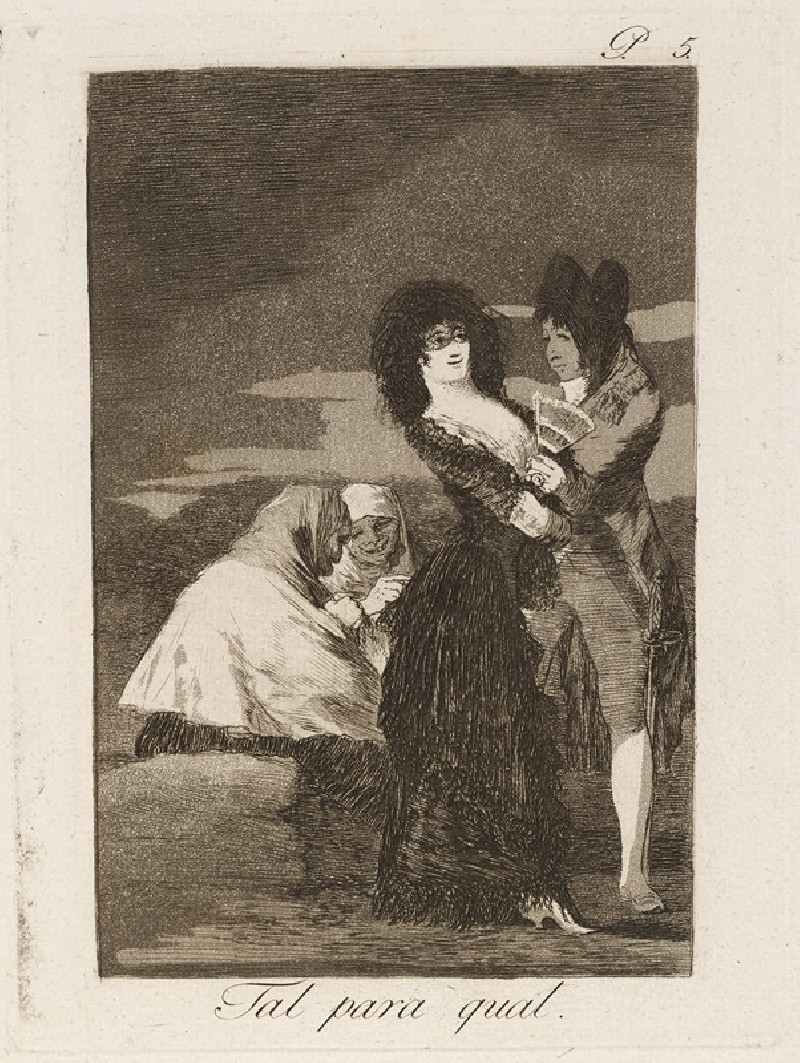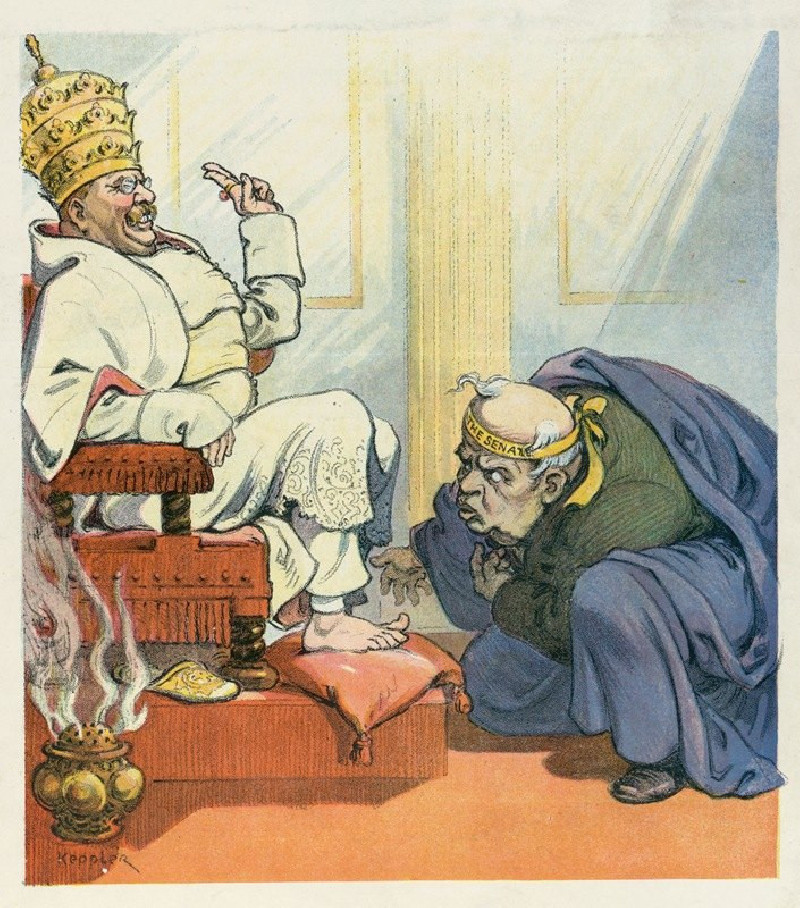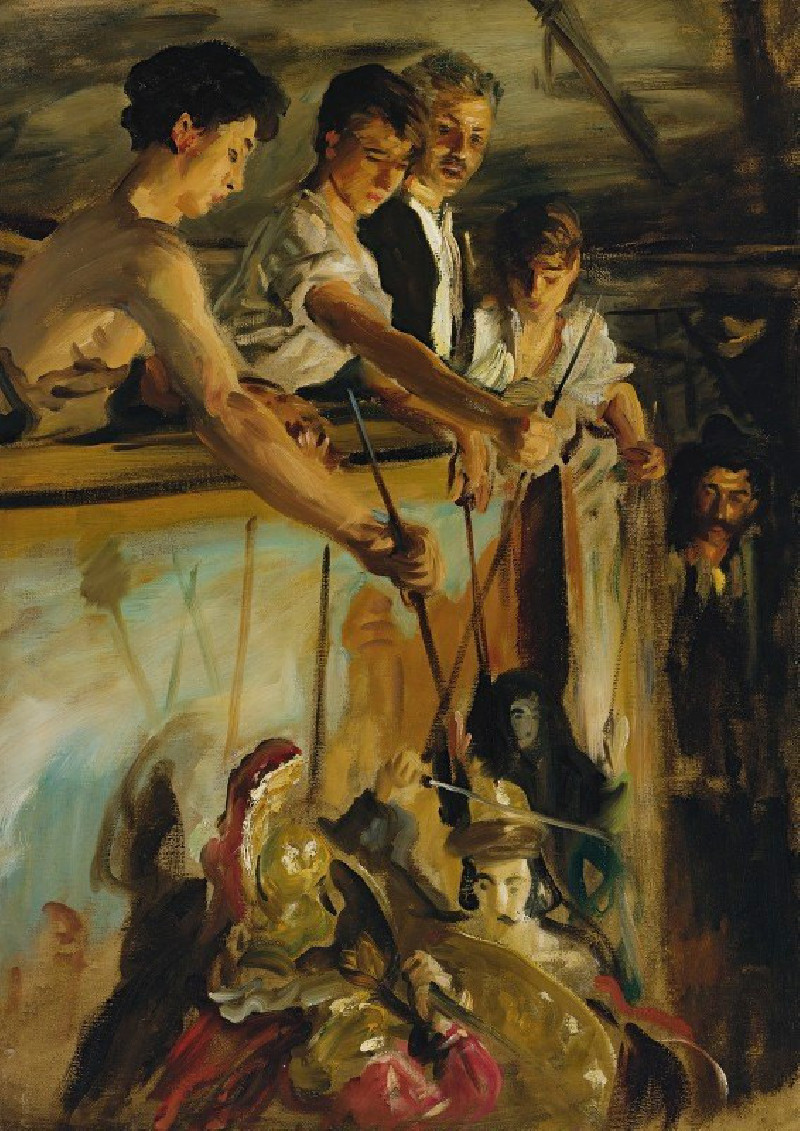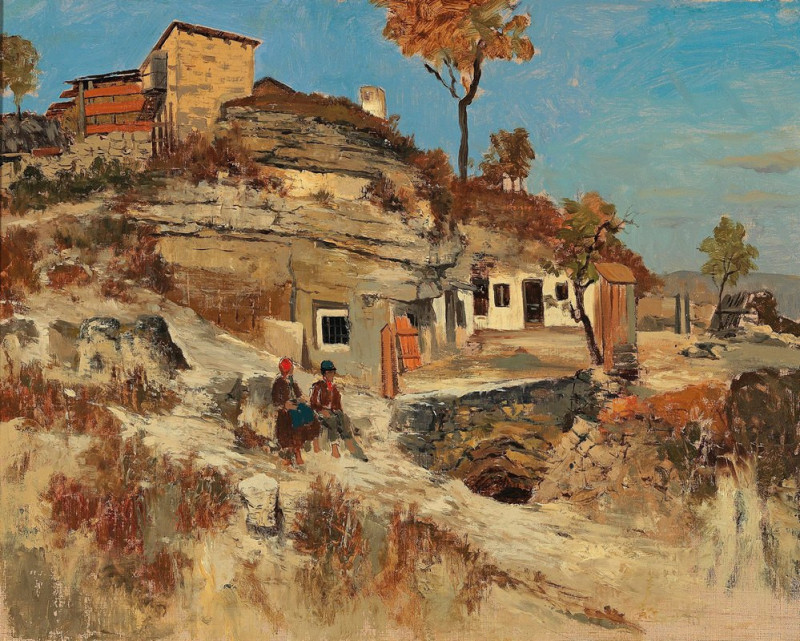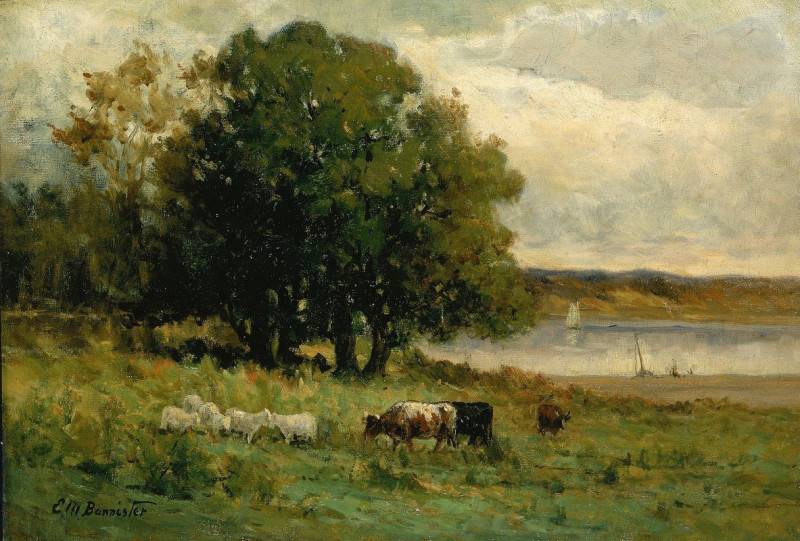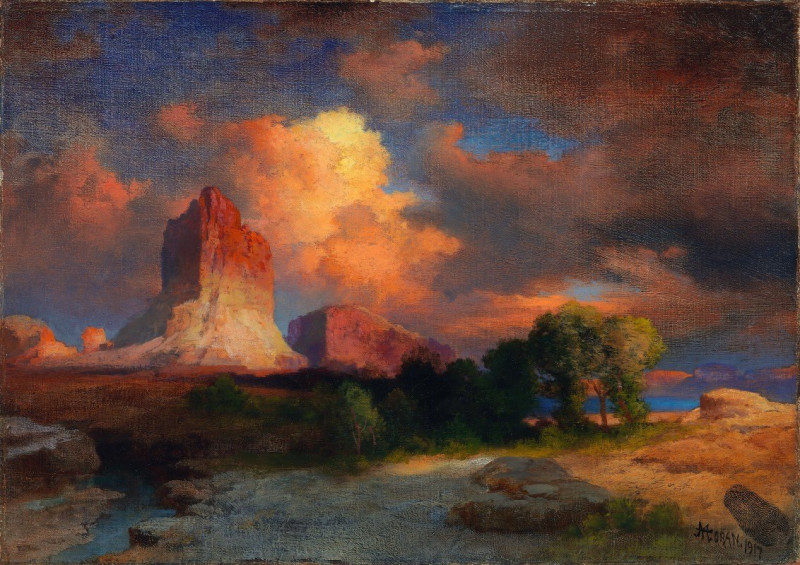Blumenterrasse im Wannseegarten nach Nordwesten (1920)
Technique: Giclée quality print
Recommended by our customers
More about this artwork
Description: Embrace the verdant tranquility depicted in Max Liebermann's exquisite pastel work, "Blumenterrasse im Wannseegarten nach Nordwesten" from 1920. This painting invites viewers into a serene garden terrace scene at Wannsee, where Liebermann spent many years infusing his work with the spirit of this enchanting locale.The canvas bursts with vibrant color and dynamic brushstrokes, characteristic of Liebermann's transition into Impressionism. The foreground features distinct, lush green grass patches interspersed with vivid blooms of blue and yellow, suggesting a lively garden in full bloom. A central fountain catches the light and adds a refreshing element to the scene, while dashes of red and orange near the middle suggest the presence of flowering shrubs or trees in the background.Liebermann’s masterpiece conveys not just the visual beauty of the Wannsee gardens, but also an atmospheric tranquility. It reflects his mastery in capturing the essence of outdoor scenes with a lively, yet soothing palette.
Delivery
Returns
Max Liebermann was a German painter and printmaker of Ashkenazi Jewish ancestry, and one of the leading proponents of Impressionism in Germany.
The son of a Jewish fabric manufacturer turned banker from Berlin, Liebermann grew up in an imposing town house alongside the Brandenburg Gate.
He first studied law and philosophy at the University of Berlin, but later studied painting and drawing in Weimar in 1869, in Paris in 1872, and in the Netherlands in 1876–77.

